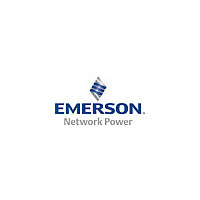pth03010 Astec Powe, pth03010 Datasheet - Page 3

pth03010
Manufacturer Part Number
pth03010
Description
Pth03020 3.3vin Single
Manufacturer
Astec Powe
Datasheet
1.PTH03010.pdf
(12 pages)
Available stocks
Company
Part Number
Manufacturer
Quantity
Price
Part Number:
pth03010WAS
Manufacturer:
TI/德州仪器
Quantity:
20 000
Company:
Part Number:
pth03010YAZ
Manufacturer:
Texas Instruments
Quantity:
135
2. System Interface Information
2.1 Input Capacitor
The recommended input capacitor(s) is determined by the 1,000 µF
minimum capacitance and 700 mA rms minimum ripple current
rating. Ripple current and <100 mΩ equivalent series resistance
(ESR) values are the major considerations, along with temperature,
when designing with different types of capacitors. Unlike polymer
tantalum, conventional tantalum capacitors have a recommended
minimum voltage rating of 2 x (maximum dc voltage + ac ripple). This
is standard practice to insure reliability. For improved ripple reduction
on the input bus, ceramic capacitors may be substituted for
electrolytic types using the minimum required capacitance.
2.2 Output Capacitance (Optional)
For applications with load transients (sudden changes in load
current), regulator response will benefit from an external output
capacitance. The recommended output capacitance of 330 µF will
allow the module to meet its transient response specification (see
product datasheet). For most applications, a high quality computer-
grade aluminum electrolytic capacitor is most suitable. These
capacitors provide adequate decoupling over the frequency range,
2 kHz to 150 kHz, and are suitable when ambient temperatures are
above 0 ºC. For operation below 0 ºC, tantalum, ceramic or Os-Con
type capacitors are recommended. When using one or more non-
ceramic capacitors, the calculated equivalent ESR should be no
lower than 4 mΩ (7 mΩ using the manufacturer’s maximum ESR for
a single capacitor). A list of preferred low-ESR type capacitors are
identified in Table 2.
2.2.1 Tantalum Capacitors
Tantalum type capacitors can be used at both the input and output,
and are recommended for applications where the ambient operating
temperature can be less than 0 ºC. The AVX TPS, Sprague
593D/594/595 and Kemet T495/T510 capacitor series are suggested
over many other tantalum types due to their higher rated surge,
power dissipation, and ripple current capability. As a caution many
general purpose tantalum capacitors have considerably higher ESR,
reduced power dissipation and lower ripple current capability. These
capacitors are also less reliable when determining their power
dissipation and surge current capability. Tantalum capacitors that do
not have a stated ESR or surge current rating are not recommended
for power applications.
When specifying Os-Con and polymer tantalum capacitors for the
output, the minimum ESR limit will be encountered well before the
maximum capacitance value is reached.
2.2.2 Ceramic Capacitors
Above 150 kHz the performance of aluminum electrolytic capacitors
becomes less effective. To further improve the reflected input ripple
current or the output transient response, multilayer ceramic
capacitors can also be added. Ceramic capacitors have very low
ESR and their resonant frequency is higher than the bandwidth of the
regulator. When used on the output their combined ESR is not critical
as long as the total value of ceramic capacitance does not exceed
300 µF. Also, to prevent the formation of local resonances, do not
place more than five identical ceramic capacitors in parallel with
values of 10 µF or greater.
File Name: an_pth03020.pdf Rev (05): 21 Dec 2005
(1)
2.2.3 Capacitor Table
Table 2 identifies the characteristics of capacitors from a number of
vendors with acceptable ESR and ripple current (rms) ratings. The
recommended number of capacitors required at both the input and
output buses is identified for each capacitor type.
This is not an extensive capacitor list. Capacitors from other vendors
are available with comparable specifications. Those listed are for
guidance. The RMS ripple current rating and ESR (at 100 kHz) are
critical parameters necessary to insure both optimum regulator per-
formance and long capacitor life.
2.2.4 Designing for Very Fast Load Transients
The transient response of the dc-dc converter has been
characterized using a load transient with a di/dt of 1 A/µs. The
typical voltage deviation for this load transient is given in the
datasheet specification table using the optional value of output
capacitance. As the di/dt of a transient is increased, the response of
a converter’s regulation circuit ultimately depends on its output
capacitor decoupling network. This is an inherent limitation with any
dc-dc converter once the speed of the transient exceeds its
bandwidth capability. If the target application specifies a higher di/dt
or lower voltage deviation, the requirement can only be met with
additional output capacitor decoupling. In these cases special
attention must be paid to the type, value and ESR of the capacitors
selected.
If the transient performance requirements exceed that specified in
the datasheet, or the total amount of load capacitance is above
3,000 µF, the selection of output capacitors becomes more
important.
Application Note 151
www.artesyn.com
3












